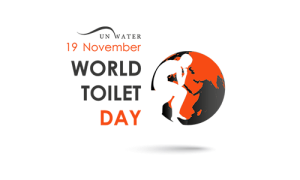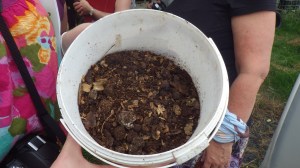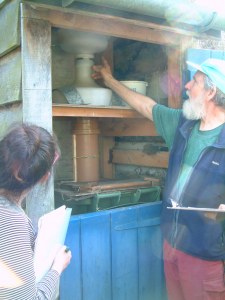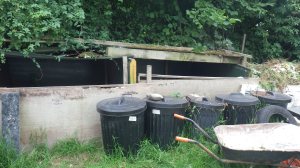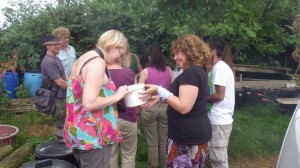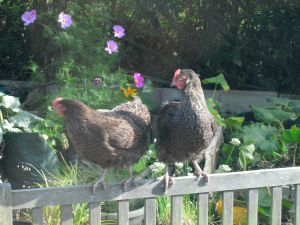Having a dog is not necessarily an environmentally friendly choice. They consume resources and they produce waste. However, I know that my dogs are good for my mental and physical health, plus both are rescues and, therefore, they were ‘going spare’ so to speak. So, with various issues about feeding, entertaining, maintaining doggy health and dealing with waste in mind, over the past few years I have been making changes to try to reduce my dogs’ environmental pawprints, and I think that I have finally achieved the best I’m going to. If you have dogs (or cats), I think it’s worth doing a bit of an environmental audit and seeing where you can make improvements; perhaps my experience and conclusions will be helpful.
Food
This, surprisingly, has been the final thing that I’ve got sorted to my satisfaction. I have been through a variety of foods, up until recently mainly relying on tinned organic meat (i.e. not a complete diet) combined with organic complete dog biscuits. However, both these products were made in Germany and the biscuits came in a plastic sack. I decided to make a concerted effort, therefore, to seek out some food produced closer to home and plastic free. Some extensive searches led me to Naturaw, which is raw food made from high-welfare meat, available in a variety of flavours and it comes packed in home-compostable cartons made from sugar cane waste. The packaging does include wool insulation that’s plastic-covered, but you simply collect this and when you have eight pieces, you send it back and get £5 off your next order. The dogs absolutely love this food (we’ve fed them a partially raw diet for ages, getting minced offal and trim from an organic butcher) and it’s produced in the UK. It’s worth knowing that the company also sells cat food, so if you are looking to get away from those environmentally disastrous pouches, this might be the answer. I also found Clydach Farm, who sell British-produced complete dry dog food packed in paper sacks, so I’ve bought some of this too, although we’re currently using up the last of the old stuff from Germany.



Both companies I am buying from support British farming and do not use plastics in their packaging (apart from the returnable stuff that gets reused). I am able to home compost all the cartons and sacks so I’m taking full responsibility for dealing with the waste… and it’s adding fertility to my garden.
Snacks
I gave up buying dog biscuits years ago and now make my own: flour, fat, medicinal charcoal powder and water are the only ingredients. Simply rub the fat into the flour, add the charcoal and mix, then add enough water to make a dough. Roll it out, cut it into biscuits and bake in the oven. I usually cook mine when I have the oven on for something else, so don’t even use any extra electricity and the only plastic involved is the bag the charcoal came in.
Dental health
We’ve given up the dental chews and moved over to crunchy carrot sticks. The carrots usually come in bunches from the local organic farm, so there is absolutely no packaging and very few chew miles.
Equipment
All dogs need collars and leads and ours each have a harness, Daisy also has waterproof overalls and Sam has a waxed jacket. Other than that there are beds and towels and crates. I think the important thing to remember here is that dogs don’t care whether their lead matches their collar or whether they are colour-coordinated with your outfit. With this in mind, we keep our purchases to a minimum, so Daisy is still wearing the collar she arrived with and using Max’s old lead and Sam has had the same collar and lead for the past 10 years. Daisy’s overalls were bought new for her last year, but they should last a good long time and can be repaired; Sam’s waxed cotton coat (with warm lining added by me using a bit of scrap fleece) belonged to a dog we had many years ago. Beds are washable and generally made from scraps or are secondhand.






Entertainment
Sam loves a ball – Daisy is indifferent, so we have a few balls. We buy good quality robust balls (not tennis balls) and these last for years. Sam is a strong chewer, so she needs toys that she can really get her teeth into – recently both she and Daisy have been enjoying pieces of antler that we’ve had for a few years (originally bought because Max was allergic to bones) and in her life she has had a couple of Kong chew toys that have lasted ages.



Poo
Although this is probably the issue that most people don’t want to think about, it is one that I resolved a long time ago. Basically my approach is to collect the poo in paper and, if necessary, transport it home in a much re-used plastic bag. Once back home, poo and paper go into a compost bin with a lid that can be secured and a tap at the bottom, so that excess moisture can be drained off. To this we add more paper to ensure that there is plenty of fibre and cold wood ash to increase the pH because poo is acidic. The bin is gradually filled and, after a few months, the contents are transferred to a second bin along with other partly composted material, where it all remains (with a secure lid on) for about a year. Once fully composted, the resultant material (which does not smell) is buried… for example in the bottom of the trench dug for climbing beans each year. We do not use this compost as top-dressing on the vegetable plot, just in case.
There are other approaches – you can buy a dog waste composter that can be buried in the ground, and which releases the nutrients directly into the earth. This was not a viable option for us because we have very shallow soil overlying shale and so digging a pit would have required machinery, plus the soil water is often at the surface, so it would have created surface contamination… our system is contained and controllable. You could burn the waste, but this isn’t very environmentally friendly, or you can simply bin (or even flush it) it and let it be somebody else’s problem – a solution that I was not prepared to accept.
Handling dog waste is necessary for all dog owners – unless you are irresponsible and don’t clean up after them – and care is required. Anyone with health issues needs to be very cautious. Our system requires more than one handling, but with care (gloves, face mask, washing hands, face body and clothes afterwards etc) you can reduce exposure and end up with a useful resource. I personally do not advocate the use of degradable plastic bags – these simply break down into small fragments in the environment and cause additional plastic pollution. If you are not prepared to take responsibility for all aspects of your dog’s life, you shouldn’t have a dog.
So, there you have it – I’ve tried to address all make improvements as far as possible gradually over the years and I think we are all happy with the results.


